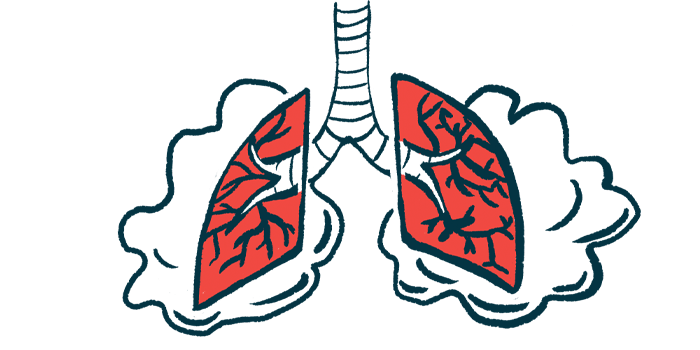Trikafta Leads to Lesser Need for Antibiotics, Fewer Hospitalizations

Treatment with Trikafta is linked with fewer infection-related hospitalizations and a reduced need for antibiotics among people with cystic fibrosis, a study based on real-world U.S. data indicated.
The study, “The rapid reduction of infection-related visits and antibiotic use among people with cystic fibrosis after starting Elexacaftor-Tezacaftor-Ivacaftor,” was published in Clinical Infectious Diseases.
CF is caused by mutations in the CFTR gene, which codes for a protein of the same name that allows chloride ions to pass in and out of cells. A defective CFTR protein disrupts this passage and the flow of water through the cell membrane, which leads to a thick mucus buildup in various organs, including the lungs. This mucus accumulation creates an ideal environment for bacteria to thrive.
Infections, which often begin at a young age, can be caused by several pathogens, including antibiotic-resistant bacterial strains such as methicillin-resistant Staphylococcus aureus (MRSA), certain non-tuberculous mycobacteria (a group of bacteria related to the one that causes tuberculosis), and antibiotic-resistant strains of Pseudomonas aeruginosa.
Collectively, these infections put patients at risk of worsening outcomes.
Trikafta, marketed by Vertex Pharmaceuticals, is an oral combination of three CFTR modulators (elexacaftor, tezacaftor, and ivacaftor) that works to improve how the CFTR protein functions in patients with at least one copy of the F508del mutation in the CFTR gene, a CF-causing defect found in roughly 90% of all patients.
Clinical trials and post-approval data have shown that Trikafta significantly improves lung function and reduces pulmonary exacerbations. However, fewer studies have assessed its impact on lung infections and the use of antimicrobials in CF patients.
Researchers at the University of Iowa analyzed real-world data from the IBM MarketScan Research Databases, covering almost 30.3 million people and containing information on inpatient, outpatient, and emergency department visits, and outpatient medication claims. It is considered representative of the U.S. population, the researchers noted.
They identified 389 CF patients who started treatment with Trikafta between July 1 and Dec. 1, 2019, and continued using it through March 14, 2020. That timeframe allowed researchers to analyze data collected 15 weeks before and after the start of the therapy.
“The 15-week observation window was selected to avoid potential overlap with the COVID-19 pandemic, which led to a significant decline in healthcare utilization in March 2020,” the researchers noted.
A total of 389 CF patients not taking Trikafta during the same period were included as sex- and age-matched controls.
Almost half of the CF patients on Trikafta were women (192 patients, 49.4%), and started using it at a mean age of 27 (range 12–77). Also, the majority (87%) had a supply of the medication covering the 15-week follow-up.
Specifically, the team compared the number of total healthcare visits, inpatient visits, infection-related visits, and antimicrobial prescriptions before and after Trikafta was initiated.
Outcomes were analyzed using two types of analyses.
The first was a case-crossover analysis, which evaluates a specific group at two periods of time.
This analysis showed that a 15-week treatment of Trikafta was associated with fewer healthcare visits, inpatient admissions, infection-related visits, and antibiotic prescriptions.
By contrast, these parameters remained generally unchanged or worsened in control patients, although initial data of overall infections and healthcare utilization suggested that patients on Trikafta had more severe disease.
Increased age was not significantly associated with any of the outcomes, but being a female was linked with a more infection-related visits. Also, co-existing conditions were associated with worsening across all outcomes.
The second type of analysis — a difference-in-differences comparison — that allows estimations of underlying trends and accounts for difference between the groups (such as in genetic mutations or disease severity), led to similar results.
“Our results show a dramatic decrease in infection-related visits, antibiotic use, all visits, and all hospitalizations after people with CF” started on Trikafta,” the researchers wrote.
“Given that this therapy is effective for approximately 90% of people with CF, the impact on respiratory infections and antimicrobial use may be substantial,” they concluded.
The scientists cited the relatively short follow-up period, caused by the COVID-19 pandemic, as among the study’s limitations.
“A longer observational period would have increased the number of subjects and the time to observe more unusual events,” they wrote.








